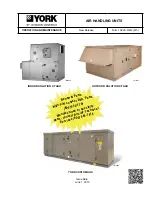
33
Quando tutte le connessioni elettriche sono state controllate,
accendete l’unità e verificate che il sistema funzioni
correttamente. L’unità dovrebbe modificare da velocità bassa
(Low) a Boost tramite l’interruttore dedicato.
La portata d’aria deve essere regolata in ogni valvola di taratura
nelle singole stanze in modo da bilanciare il sistema.
La misurazione della portata d’aria (m
3
/h) deve essere eseguita
tramite una apparecchiatura di rilevamento di portata
d’aria e i risultati devono essere confrontati e allineati con
i dati di progetto. Il metodo più comune prevede l’utilizzo
di un anemometro, o simile, collocato in modo da ricoprire
completamente la bocchetta per misurare la portata d’aria in
espulsione o immissione.
When the wiring connections have been checked, switch on the
mains supply and check that the system is operating correctly.
The unit should switch between low and boost speeds using the
boost switch.
Airflow rates will need to be set at each room’s air-valve to balance
the system.
Air flow (m
3
/h) shall be measured by using suitable equipment and
the data shall be compared and they shall suit the project data.
The most common method uses a vane anemometer, or similar,
placed in a hood which completely covers the air-valve to measure
the extract or supply airflow rate.
BILANCIAMENTO DEL SISTEMA
Prima di iniziare le operazioni di bilanciamento, si prega
di chiudere completamente tutte le porte e finestre
interne ed esterne.
•
Apertura completa di tutte le bocchette. (Fig. 1)
•
Attivare l’unità (Fig.2)
•
Misurare il volume totale di aria estratta sulla bocchetta di
estrazione posta all’esterno dell’edificio. (Fig. 3)
•
Se necessario, attraverso l’interfaccia utente, modificare
il set “Low” del ventilatore espulsione (vedi paragrafo 5.3
parametro C004) fino a raggiungere il valore di volume totale
in estrazione da progetto. (Fig. 4-5)
•
Tarare le singole bocchette di estrazione fino a raggiungere i
dati di progetto. (Fig. 6)
•
Misurare il volume totale di aria sulla bocchetta di immissione
posta all’esterno dell’edificio. (Fig. 7)
•
Se necessario, attraverso l’interfaccia utente, modifica il
set “Low” del ventilatore di immissione (vedi paragrafo 5.3
parametro C002) fino a raggiungere il valore di volume totale
in immissione da progetto. (Fig. 8-9)
•
Tarare le singole bocchette di immissione fino a raggiungere
i dati di progetto. (Fig. 10)
•
Effettuare la stessa procedura da figura 3 a figura 10 per la
modifica delle portate di boost (parametro C005 per massima
velocità di espulsione e parametro C003 per massima velocità
di immissione) (Fig.11-12)
SYSTEM BALANCING
Before starting balancing operations, please close all
internal and external doors and windows
•
Fully open all of the air-valves. (fig. 1)
•
Switch ON the unit. (Fig. 2)
•
Measure the total air volume from the outdoor extract vent (Fig. 3)
•
If necessary, using the user interface control, adjust the ‘low’ speed
of exhaust fan (see paragraph 5.3 parameter C004) to achieve
the total design extract rate. (Fig. 4-5)
•
Adjust individual room air-valves to achieve the individual room
design extract rates (Fig. 6)
•
Measure the total air volume from the external supply vent. (Fig. 7)
•
If necessary, using the user interface control, adjust the ‘low’ speed
of input fan (see paragraph 5.3 parameter C002) to achieve the
total design supply rate. (Fig. 8-9)
•
Adjust individual room air-valves to achieve the individual room
design supply rates. (Fig. 10)
•
Follow the same procedure from figure 3 to figure 10 in order to
change boost flow rate (parameter C005 for Max exhaust speed
and C003 for Max input speed) (Fig.11-12)
6 -AVVIAMENTO E COLLAUDO
6 - START-UP AND TESTING
Summary of Contents for CHR 120-FC/S
Page 2: ......
Page 54: ...54 13 3 SONDE NON UTILIZZATO OPZIONALI 13 3 PROBES NOT USED OPTIONAL...
Page 55: ......












































